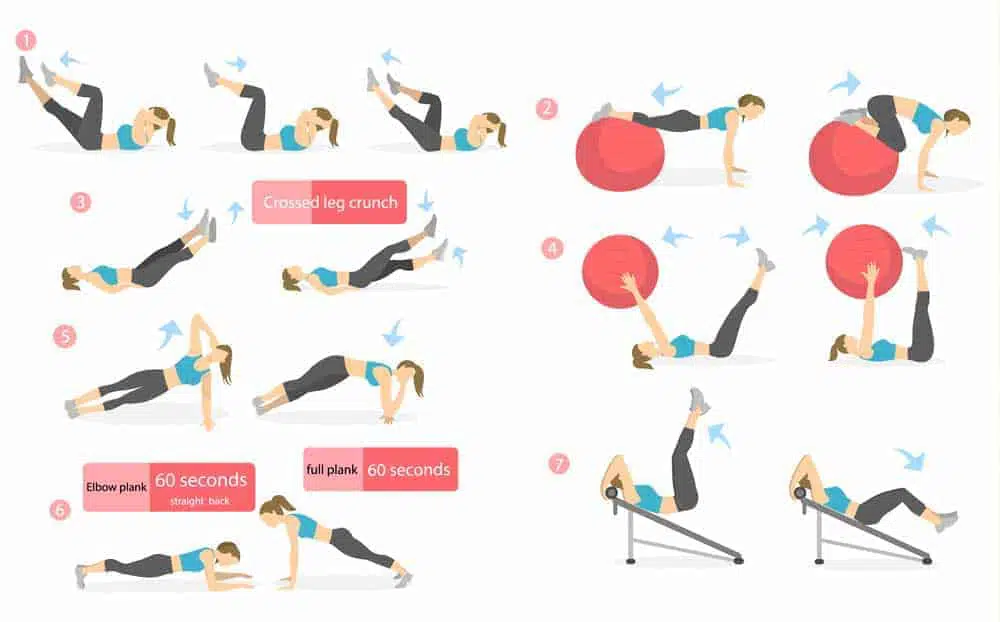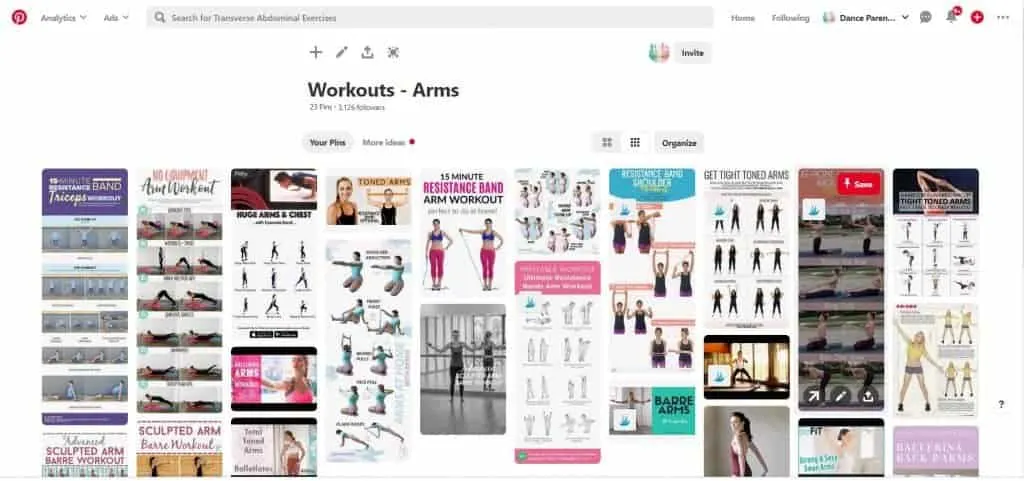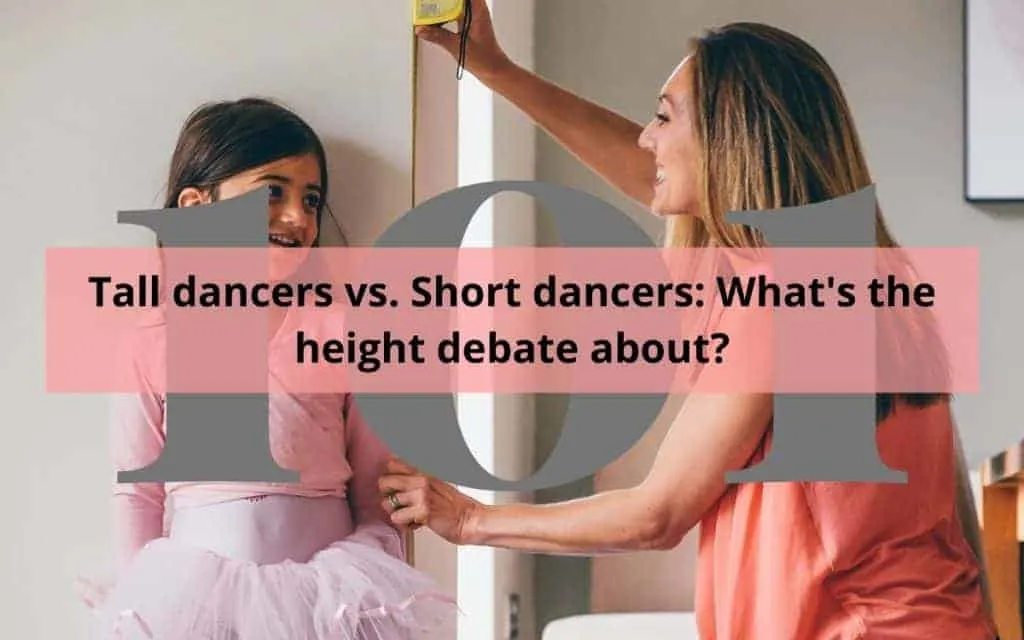
Not all dancers are built exactly alike. There is no perfect dance body although being proportioned does help. But what about those dancers without body congruity? For example, those dancers who have longer arms and/or longer legs. Does having longer arms or legs negatively affect being able to master the art of ballet, tap or jazz dancing or are there ways you can work with your long arms and long legs to your benefit?
How can someone dance with long arms and/or long legs? If you have long arms or long legs and you want to be a dancer, you are not without hope. While it will be more challenging, your muscles can be trained through exercises, such as pilates or progressing ballet techniques to help improve your balance, dynamics, and aesthetics.
You should never give up dancing just because you have long arms, long legs, or both. Here are some steps and strategies that you can use to dance well.
1. Strengthen Your Core
PROBLEM:
When you have long arms or legs you can feel unbalanced when dancing, slower, uncoordinated or clumsy. The thing is that most people don’t actually engage their core muscles effectively when moving and rely on opposing muscles to take that slack which leads to muscle pain, strains, bad posture, inability to balance for very long and injury.

SOLUTIONS:
Your core muscles are all those muscles in the mid section of your body that help you stand tall, bend over, walk, sit down… well basically do most things. The tallest ballet dancer in the world according to Guinness World Records Fabrice Calmels states that he has to do extra exercises to engage his back and abs as he works harder when rotating around his spine such as when doing pirouettes. He starts his day with 200 crunches! Tall people or those with long limbs need to strengthen their abdominal muscles to achieve better balance and coordination. Core exercises are also an excellent way to develop the ability to fully extend your movement and control them at the same time.
If a person with either long arms, long legs or both has a shorter torso, work NEEDS to be done to strengthen the core to avoid injury. There are loads of exercises you can do to strengthen the core of your body and to reap their benefits you should be doing them everyday, not just before dance classes!
1. Exercises you can try to strengthen your core
Before doing any of the following exercises make sure you consult a doctor if you believe they could in any way be harmful to you and never continue with an exercise if it is painful.

Using an exercise ball like in the instructional image above helps not only to add resistance but also helps create some interest in your core work out. We love this exercise ball on amazon.com because it comes with a free ebook full of workouts you can do on the ball as well as a pump, a spare air plug, and valve remover tool. It comes in a variety of sizes and if you scroll down to the product details they have a great chart that tells you which size ball is perfect for your height.
2. Pilates for strength
Pilates is a type of low impact exercise that focuses on increasing flexibility, muscular strength, and endurance. These exercises encourage movement patterns that work with your posture, balance and alignments. It was developed over a 100 years ago to rehabilitate soldiers after the war but was adopted by dancers and can be found in many different forms today.
Some people are intimidated by pilates, but it is nothing to fear. You do not have to have special equipment. The floor and a mat are all you need to get started. Amazon Prime Video has a huge library of Pilates videos that you can rent or buy such as this 20min workout for beginners or this Ballet Body Core Workout based on pilates techniques.
3. Progressing Ballet Technique
Progressing Ballet Technique or PBT is a form of exercise that teaches dancers how to properly engage the muscles they need to use in dance. The program was developed by Marie Walton-Mahon. Marie says of the use of the exercise ball routinely used in PBT workouts ‘It is difficult for students to feel what muscles initiate the correct alignment in ballet training, however, as the fit ball is continually mobile under the students’ body, it gives the students a sense of posture and weight –placement whilst feeling each correct muscle group.’ (PBT website)
PBT is taught all around the world by professionally trained teachers and you can find a teacher near you by visiting their website.
2. Co-Ordination
PROBLEM:
Having long limbs can mean they are harder to co-ordinate meaning, what you are wanting them to do is different compared to what they are actually doing. This can be because of the many reasons I address further in the article but it can also be because you need to train your brain, legs and arms to communicate more effectively.
SOLUTION:
Practice until you can’t get it wrong! That’s right, the way to improve your co-ordination is through consistent practice. But what are you practicing? Learning choreography! So any chance you get to learn a combination of steps or a routine do so. The more often you challenge your brain to learn new routines and choreography the more neural pathways you are creating to increase the speed at which your brain communicates with your body, thus improving your coordination.
Visualizing yourself moving can also help increase the communication between your brain and your limbs. Think about what steps or moves you want to be able to do. See yourself doing them, what are your legs exactly doing? What do your arms need to be doing? Go through and repeat the routine focusing on different parts of your body that you are having trouble with and tell your brain what they are supposed to be doing and then go and practice what you have visualized.
If you are wanting some free choreography to practice and learn at home check out the following article!

3. Tone and strengthen your arms
PROBLEM:
Dancers with long arms sometimes feel as though they are dead weights that are holding them back or that they flop or seem to do all the movements a moment after the rest of their body.
SOLUTION:
Toning and strengthening your arms will also help you harness your energy and use your long arms dynamically or gracefully when the choreography calls for it. Although a port de bra exercise in ballet meaning the carriage of the arms can seem slow, boring and to some pointless, the strength it takes to be able to hold your arms correctly to the side in second and above your head in fifth for extended amounts of time whilst maintaining your posture and alignment is crazy good for toning and strengthening them and your core muscles! Many dancers recommend using the Port De Band available from stretchstrength.com for added resistance during the port de bra exercise.
Alternatively, a good set of arm exercises that focus on the various muscles of the arms and shoulders can also help. For some great ideas and inspiration, you should check out our Workout-Arms board on Pinterest.

4. Tone and strengthen your legs.
PROBLEM:
When you have long legs sometimes they can feel like dead weights attached to your pelvis that you need to somehow kick magically over your head or hold in full developpe next to your ear. And don’t get me started on jumps and leaps! Having long legs can make it feel as though need a longer preparation or run up or more room to get the momentum for high and dynamic leaps and jumps.
SOLUTION:
To be able to do this we have already stated that core strength is a must, but you also need good muscle tone in your legs to be able to get good elevation in your jetes or leaps and be able to move from the ground to standing positions in 1 count. This is where a good leg workout comes in and some of the best are not always done in the gym but at home using a door stretch band set like this one one on amazon. This set is great as it comes with an exercise and stretching booklet and access to an online portal that gives you even more information on how to use the band effectively and safely.
You can also have a look at our Pinterest board Workout-Legs for more ideas and inspiration!

5. Fully extend and tame your energy!
PROBLEM:
Many long-armed and long-legged dancers believe they cannot move as dynamically or smoothly as other dancers. For example, they feel awkward trying to be graceful or like they are dragging dead weight when jumping. A long-armed or long-legged dancer could be mistaken in thinking by shortening and minimizing their movements they will be able to control their movements and look graceful or opposingly that by throwing their movements they will get the dynamic results a dancer with shorter limbs might get, but this simply isn’t the case.
Some dancers with longer limbs believe that because their limbs essentially have to move longer or further distances then dancers with shorter limbs, that they should decrease the length of their own movement to match those of their shorter counterparts. In theory, it makes sense because it is easier to balance and therefore you can control your movement and look smoother. The problem with this is that aesthetically it will look like your arms are crooked or your knees are bent when they are meant to be fully extended.
At the other extreme, some dancers with long limbs throw out their arms or legs to fully extend them as quickly as possible sending their energy outwards and away which can leave them exhausted and their dancing a mess.
SOLUTION:
What needs to occur is exactly the opposite in each case. A dancer with long limbs should always make sure they are fully extending their movements whilst at the same time controlling and reigning in their energy. Their energy needs to be dispersed evenly through the movement right to the tips of their fingers or toes, even extending further than the limb in order to move it smoothly and dynamic, but the dancer needs to be able to pull that energy back immediately like an elastic band once let go at one end so it comes back to its origin when pulled to its limits, rather than letting it go and flinging it away.
But how can you fully extend your limbs and control your energy evenly without tripping over or getting tangled?
I love watching Matt Steffanina dance! And if you watch the many videos on his YouTube channels you will see him dancing his own choreography with people usually shorter than him. And you know what, the height difference is never the thing you notice! He moves in ways that compliment whoever he is dancing with, never compromising his dynamics, sharpness or strength. If you watch him carefully he is always balanced and centered around his core. This is how he controls his movement.
Other Solutions for dancing with long limbs.
6. Use a mirror or video yourself!
You need to be able to see what other people are seeing and how your movements look in contrast to your teachers or those that the teacher exemplifies – but don’t compare! Rather look at the movement and practise mastering your body to make movements that resemble as best as your body can what is being asked. Looking at yourself consciously in the mirror or by videoing yourself and watching it back and working on where your movements look less pleasing to the eye can be extremely effective. Dancing is all about aesthetics the way the movements look – graceful, dynamic, strong and you can create the right aesthetic by developing the muscle memory so that your body creates beautiful lines automatically and without thought. This takes practice for all dancers, not just those with longer arms or legs! Sometimes you feel as though you are doing something right, but when you actually look at your body in a mirror or on video it is a whole other story.
7. Find a good teacher who understands how to best train your body!
Many dance instructors will agree that dancing with longer arms and legs is an obstacle that you can easily overcome with the correct instruction. A good teacher can work with you on an extended basis to help you balance your body and achieve the correct technique.
If a teacher ever criticizes you and advises that your dancing looks awkward because you are not using your long limbs effectively make sure after class you take a moment to ask the instructor when they felt your dancing was being hindered by your lack of control of your limbs and what you can do about it. If they are unhelpful and full of more criticisms than helpful tips it might be wise to find another dance instructor, or when in class with them take their criticisms with a grain of salt in the future.
8. Fake It Until You Make It
When a person is first beginning to practice dancing and working out how to control their sometimes unruly long limbs, a certain amount of insecurity will be evident. You need to tell yourself that you have the perfect body for dancers, perfectly proportioned in every way. Being tall or short, long or short-limbed are just comparative descriptions, so, they are subjective to some degree. Mental confidence is a needed step to begin overcoming obstacles that can hinder your dance and enjoyment of it.
Mental barriers can keep you from becoming confident and being successful even if you have all the physical aspects of dancing down to a science. Use “fake it until you make it” as a mental strategy as you are learning. Build confidence in yourself mentally because most challenges are dealt with in the mind.
Why having long limbs is actually a good thing for dancers!
No two dancers move exactly the same. Some dancers can master one move, but another move will be difficult for them. There are certain ways people with long arms and long legs move their bodies that people with shorter limbs are unable to.
For example, with longer legs, your extensions look more dramatic and your elevation will alway exceed someones who has shorter legs. You are able to cover more space more efficiently as you move further distances in one step compared to others which allows you to cover all areas of a dance space more efficiently. If you have long arms, you can create more dynamic movement than someone with shorter arms. It’s all a matter of balance and perspective.
The general description of a dancers body is usually long and lean and therefore having longer arms or legs once you have learned to control them effectively will allow you to create the beautiful aesthetic lines so coveted within the dance world. Essentially having longer limbs can be a blessing for a dancer!
Finally, Do Not Compare Your Body with Others
Comparison is the thief of happiness. No person’s body is perfect, but everyone has value. Stop comparing yourself with others and be comfortable in your own skin. Do the needed exercises to improve your balance and coordination. Most importantly, never give up. Many dancers have faced the challenges of long limbs and gone to dance long professional careers.
You can do nothing about the structure and build of your body, but you can take care of yourself. If you do this, it will work for you when dancing. Keep dancing. Your limbs will get in step.
Related Information
Check out our article Tall dancers vs. Short dancers: What’s the height debate about? We have a load of examples in this article of dancers who are tall with long limbs for your inspiration and motivation!!!

